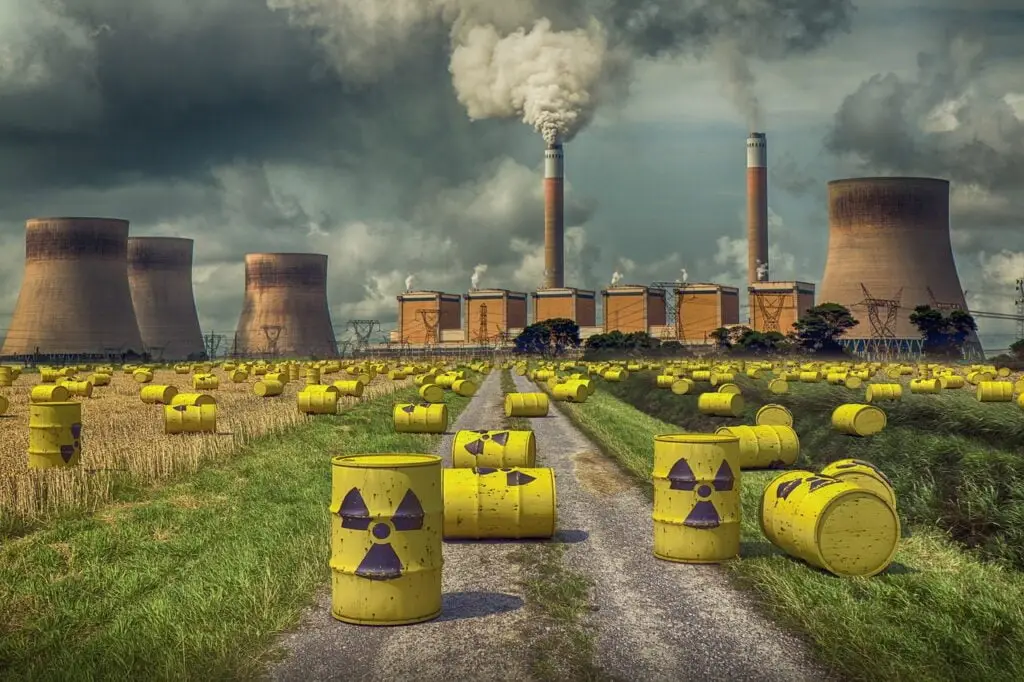
SAN JOSE – In a clandestine meeting, the leaders of the world’s wealthiest countries reached a decision that could shape the future of global energy for decades. Their conclusion: nuclear energy is crucial for addressing the planet’s burgeoning energy crisis and climate change. This bold stance, however, has sparked a heated debate among experts, policymakers, and environmentalists.
While proponents argue that nuclear energy is the only viable path to a sustainable future, critics caution that alternative renewable sources, such as wind and solar power, offer safer and more sustainable options. As the world stands at a crossroads, the question remains: Is going nuclear truly the best solution?
The Nuclear Renaissance
The recent international nuclear energy summit in Brussels marked a pivotal moment. For the first time in 70 years, representatives from over 30 countries convened to discuss the future of nuclear power. The consensus was clear: nuclear energy must play a central role in the global energy transition.
Fatih Birol, Chief of the International Energy Agency (IEA), declared, “Without the support of nuclear power, we have no chance to reach our climate targets on time.” This sentiment was echoed by other world leaders, including Belgium’s Prime Minister, who lauded nuclear energy’s potential to create jobs, drive innovation, and foster economic progress.
In December 2023, the United Nations underscored the importance of nuclear energy by including it in its “global inventory” of climate protection technologies. This move aimed to triple the use of nuclear energy by 2050, a goal that could significantly increase demand for uranium, the critical element powering nuclear reactors.
Uranium: The Double-Edged Sword
Bayridge Resources, a Canadian mineral exploration company, finds itself at the heart of this nuclear resurgence. With significant stakes in the Athabasca Basin—one of the richest uranium regions in the world—Bayridge is well-positioned to capitalize on the growing demand for uranium. The company has secured substantial funding from Sprott Asset Management, a global asset manager, underscoring investor confidence in its future.
However, the promise of nuclear energy comes with substantial risks. Uranium mining and nuclear waste disposal present significant environmental and health challenges. The waste generated by nuclear reactors remains hazardous for centuries, posing long-term storage and contamination risks. Critics argue that these issues overshadow the potential benefits of nuclear power.
Renewable Alternatives: A Safer Path
As the debate over nuclear energy intensifies, many experts advocate for a greater emphasis on renewable energy sources. Wind, solar, and hydropower offer clean, sustainable alternatives without the long-term waste disposal issues associated with nuclear energy.
Advancements in renewable technology have made these sources more viable than ever. Solar power, for example, has seen a dramatic decrease in costs and an increase in efficiency. Wind energy, harnessed through both onshore and offshore wind farms, continues to grow as a significant contributor to the global energy mix.
Furthermore, energy storage technologies, such as advanced batteries, are addressing the intermittency issues that have historically plagued renewables. These innovations enable more consistent energy supply, reducing the need for backup power sources.
The Economic Case for Renewables
Beyond environmental benefits, renewable energy also offers compelling economic advantages. Investment in renewable infrastructure creates jobs and stimulates local economies. According to the International Renewable Energy Agency (IRENA), the renewable energy sector employed 11.5 million people globally in 2022, a number expected to grow significantly in the coming decades.
In contrast, the nuclear industry requires massive upfront investments and long construction timelines. The average cost of building a new nuclear power plant is around $5.5 billion, compared to significantly lower costs for wind and solar projects. Moreover, decommissioning old nuclear plants adds to the financial burden, often costing billions and taking decades to complete.
The Path Forward
While nuclear energy can contribute to reducing carbon emissions, it is not without substantial risks and costs. The long-term challenges of nuclear waste disposal and the high economic barriers to entry make it a less attractive option compared to the rapidly advancing field of renewables.
Global leaders must weigh these factors carefully as they chart a path toward a sustainable energy future. Investing in renewable energy technologies, enhancing energy efficiency, and developing robust energy storage systems could provide a safer, more cost-effective solution to the global energy crisis.
As countries strive to meet their climate targets, the focus should be on creating a diverse energy portfolio that leverages the strengths of various renewable sources. By prioritizing innovation and sustainability, the world can move towards a cleaner, more resilient energy future without the long-term risks associated with nuclear power.
The push for nuclear energy represents a significant moment in the global energy debate. Yet, as we stand on the brink of a potential nuclear renaissance, it is crucial to consider whether this path is truly the most prudent. With the advancements in renewable energy technologies, a safer, more sustainable, and economically viable alternative is within our grasp. It is time to embrace the full potential of renewables and chart a course towards a brighter, greener future.


